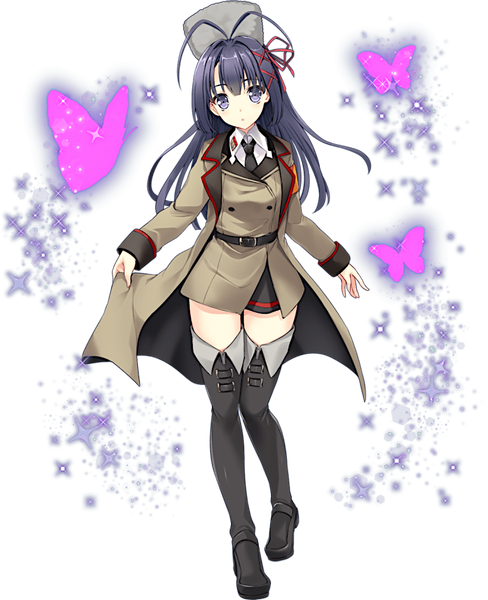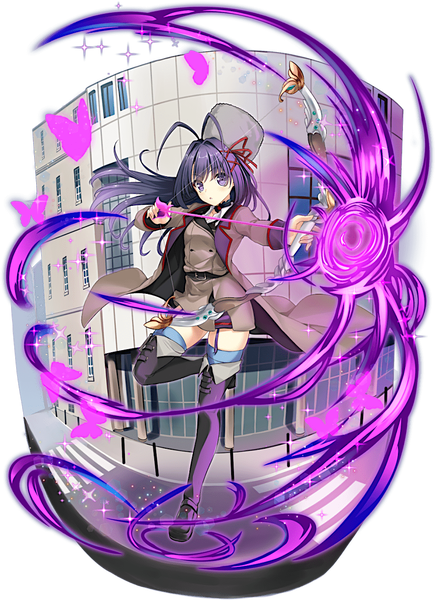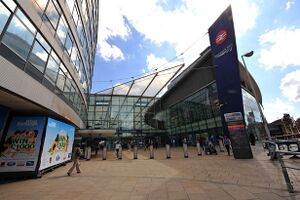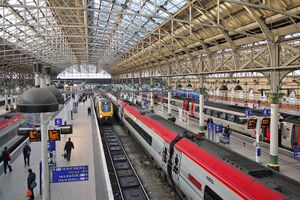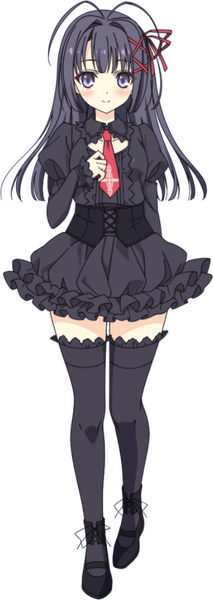
Risona Okura
| Risona Okura | |||||
|---|---|---|---|---|---|
| Japanese Name | 大蔵りそな | ||||
| Weapon | |||||
| Race | Human | ||||
| Nationality | |||||
| Birthday | May 15 | ||||
| Constellation | Taurus | ||||
| Talents | Online gaming | ||||
| Likes | Her (younger) brother, Luna | ||||
| Dislikes | The Okura family | ||||
| Strengths | Actually a high achiever | ||||
| Weaknesses | Has difficulty in socialising with other people | ||||
| Hobbies | Online gaming | ||||
Hi, I'm Risona Okura. I came to this world with my brother, but to be honest, I'm a bit nervous because I'm a hikkikomori online otaku. I don't know if I can be of any help, but me and my brother would like to work with you.
Layers
| Icon | Title | Release Date | Where to Obtain |
|---|---|---|---|
| [The Splendid Brocon] Risona Okura | 2022 November 15 | [Kiri no Sekai no Otome no Sahou ~Guided by the Mirror of Desire~] Collab Gacha | |
| [Skills Honed Through Online Games] Risona Okura | 2022 November 15 | [Kiri no Sekai no Otome no Sahou ~Guided by the Mirror of Desire~] Event Reward | |
| [Swallowtail Butterfly in the Snow Country] Risona Okura | 2022 November 20 | [Kiri no Sekai no Otome no Sahou ~Guided by the Mirror of Desire~] Collab Step Up Gacha |
Owned Skills
Trivia
- Risona Okura is a character from Tsuki ni Yorisou Otome no Sahou. Half sister of Yuusei Okura (Asahi Kokura).
- Risona's proper name is 里想奈, but in story, she prefers her name to be written in hiragana, りそな instead of kanji.
- In the story, Yuusei Okura (Asahi) calls her as her 'younger sister', while Risona always calls Yusei as 'younger brother' and Ion Okura as 'older brother'.
- Her surname Okura is a reference to Japan's Resona Bank (りそな銀行), the fifth-largest banking group in Japan as of 2012. It is headquartered in the Kiba area of Koto, Tokyo.
- Asahi and Risona in the novel spent their childhood in Manchester, England. The associated train station is Manchester Piccadilly.
Counterpart
Manchester Piccadilly is the principal railway station in Manchester, England. Opened as Store Street in 1842, it was renamed Manchester London Road in 1847 and became Manchester Piccadilly in 1960. Located to the south-east of Manchester city centre, it hosts long-distance intercity and cross-country services to national destinations including London, Birmingham, Nottingham, Glasgow, Edinburgh, Cardiff, Bristol, Exeter, Plymouth, Reading, Southampton and Bournemouth; regional services to destinations in Northern England including Liverpool, Leeds, Sheffield, Newcastle and York; and local commuter services around Greater Manchester. It is one of 19 major stations managed by Network Rail. The station has 14 platforms: 12 terminal and two through platforms (numbers 13 and 14). Piccadilly is also a major interchange with the Metrolink light rail system with two tram platforms in its undercroft.
Piccadilly is the busiest station in the Manchester station group with over 30 million passenger entries and exits between April 2019 and March 2020 (the other major stations in Manchester are Oxford Road and Victoria). As of March 2020, it is the third-busiest station in the United Kingdom outside of London (after Birmingham New Street and Glasgow Central), and is also the fourth-busiest interchange station outside London, with over 2 million passengers changing trains annually. The station hosts services from six train operating companies.
George W. Buck designed the original skew arch bridge over Fairfield Street; it had ten cast iron arch ribs, which formed one part of the brick arch viaduct, and was topped with open stonework parapets. The bridge was subsequently widened and wrought iron plate girders and transverse girders were added to support longitudinal joists with iron arch plates. In the 1960s, in the reconstruction programme, the cast iron arches and spandrels were encased in concrete. Platforms 13 and 14 are situated on top of this bridge.
Many of the original station buildings were demolished during the 1960s to clear the way for a new approach. The main entrance leads to a concourse with ground floor, and since the 2000s, mezzanine levels. The Fairfield Street entrance leads to the Metrolink station in the undercroft and is linked to the rail platforms by escalators. Between 1997 and 2002, a redevelopment programme revised the station's layout and a glass partition wall with ticket barriers separating the concourse from the platforms was constructed. The station's approach leading to the end of Piccadilly was constructed in 1969 along with the "wavy" fronted Gateway House designed by the architect Richard Seifert. Gateway House was modernised during 2003. Wikipedia
Map
Gallery
- Pages using Tabber parser tag
- Pages using DynamicPageList3 parser tag
- Weapon Bow
- Human
- Others
- Taurus
- Element Pierce
- Element Dark
- TsuriOtsu

